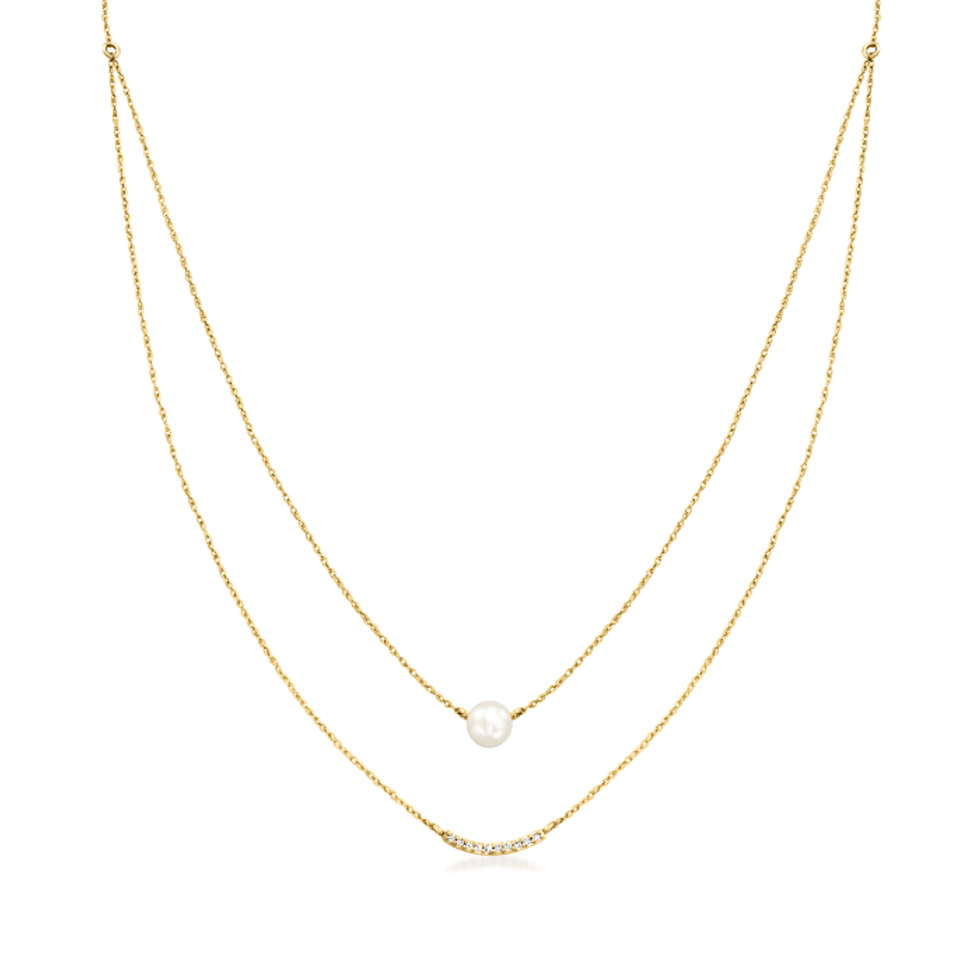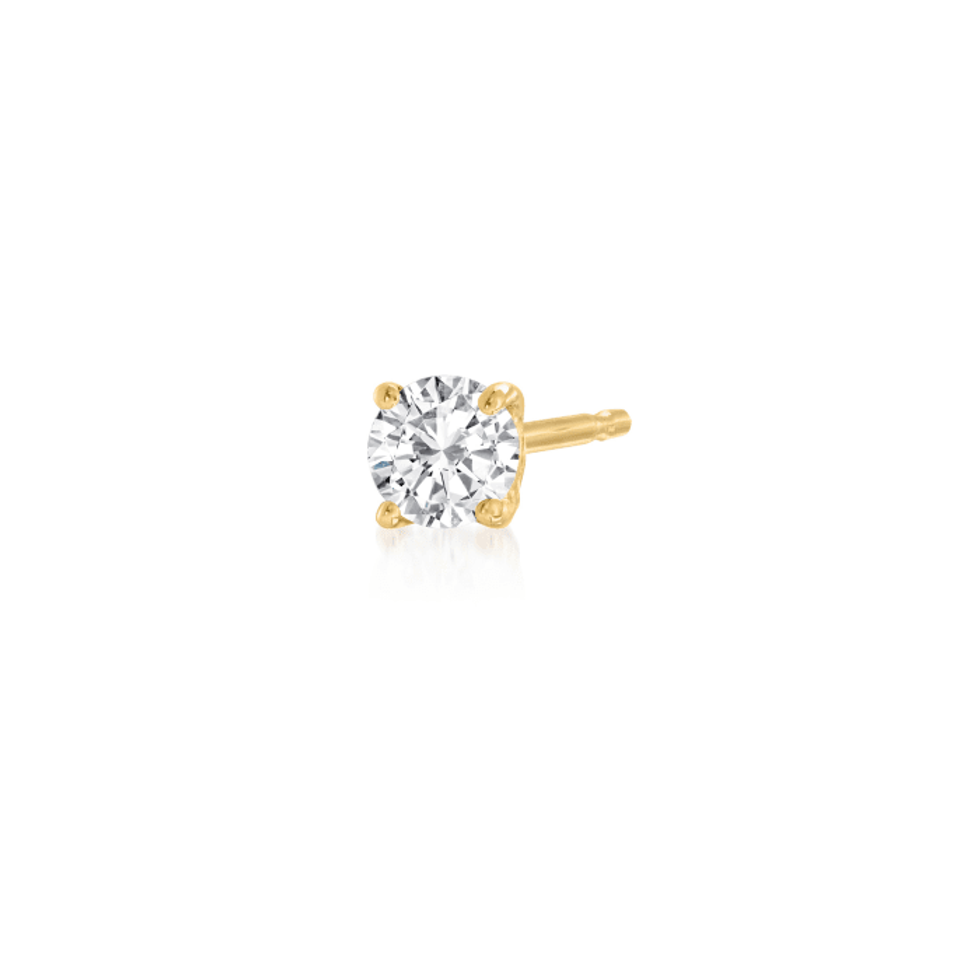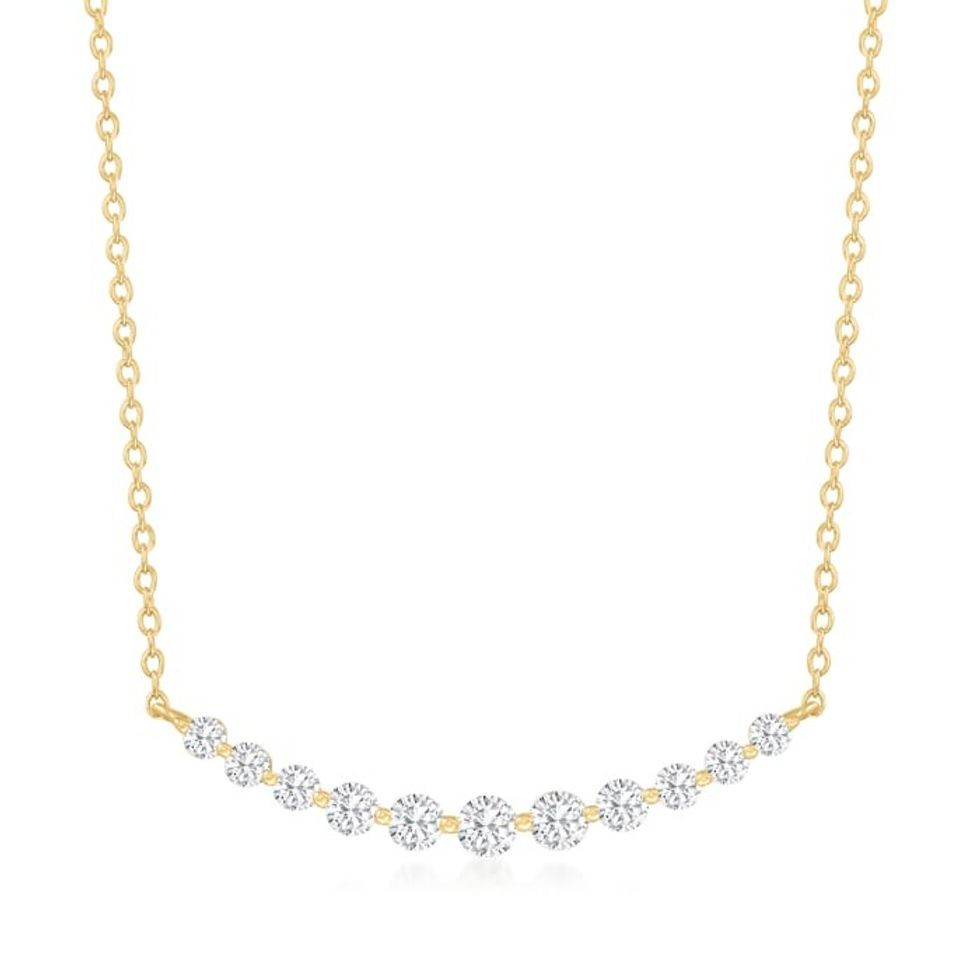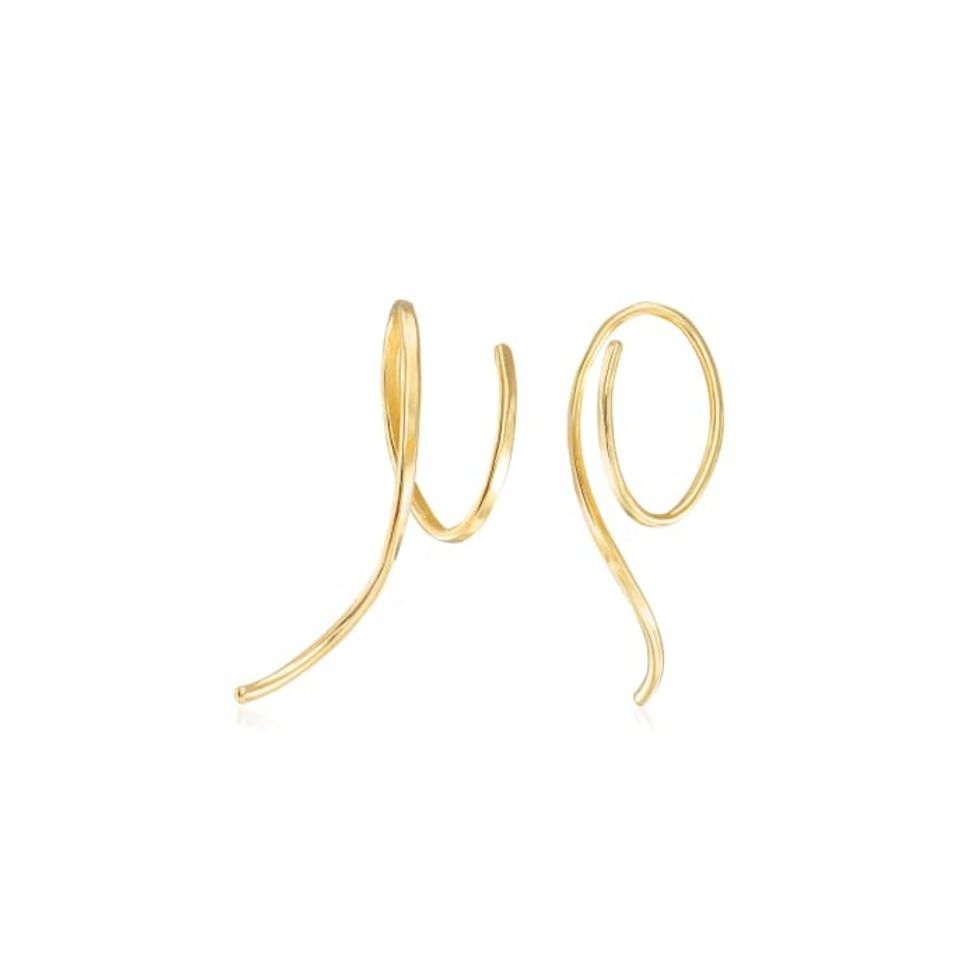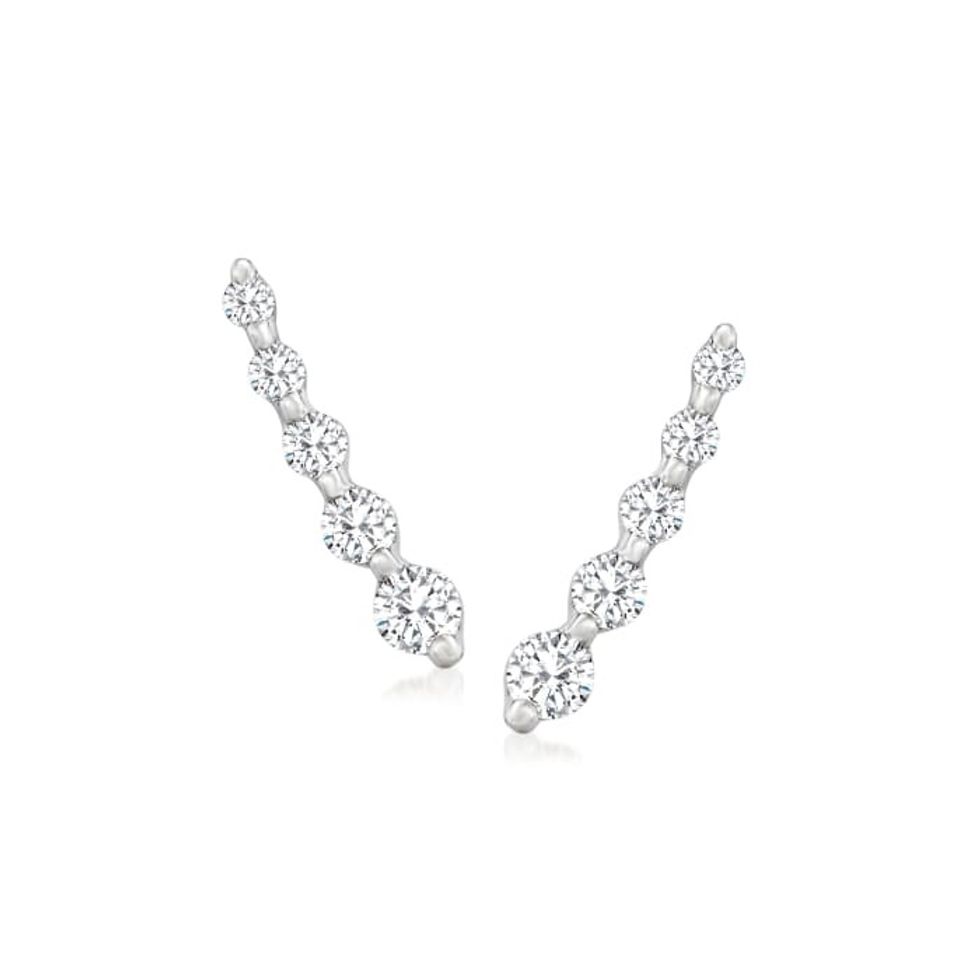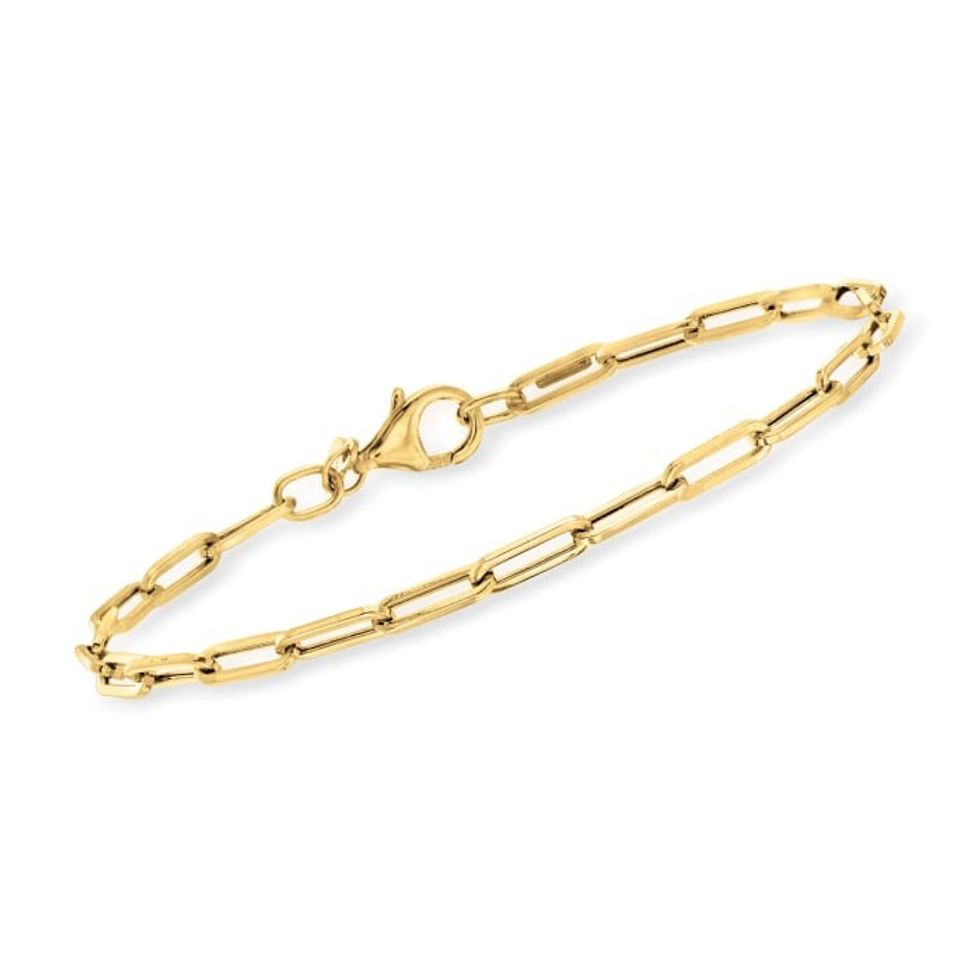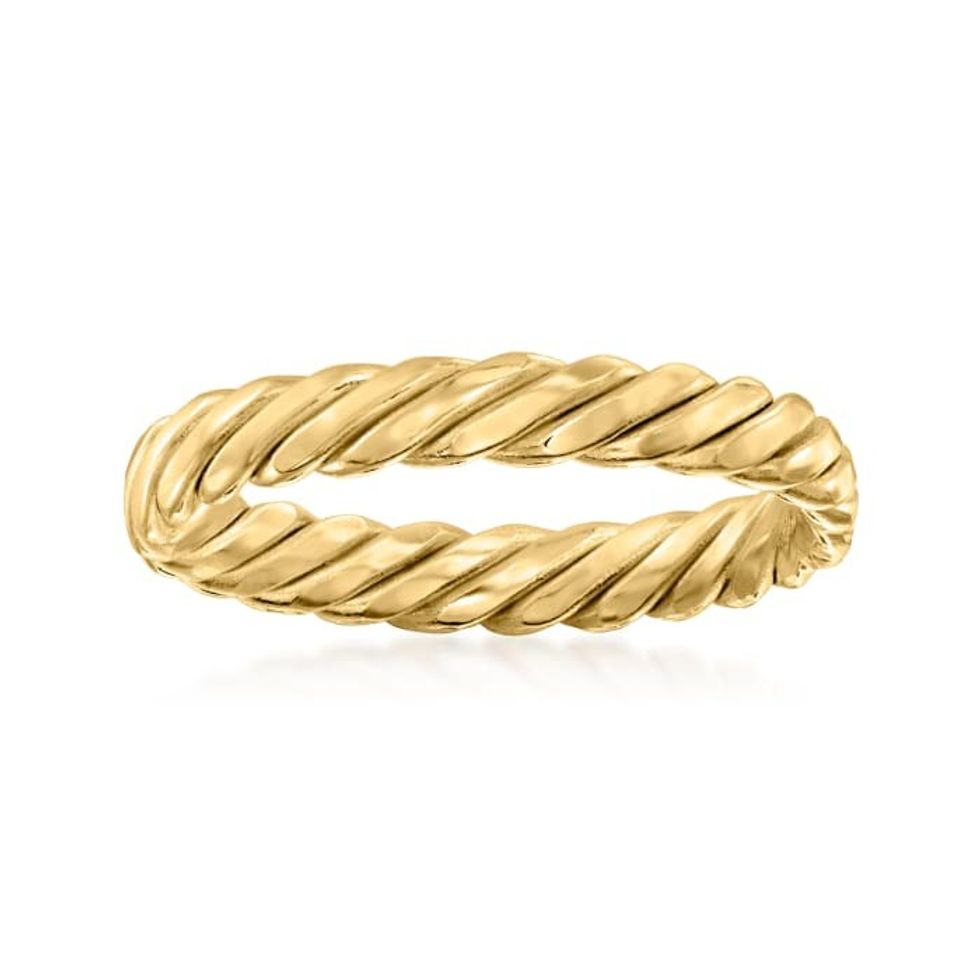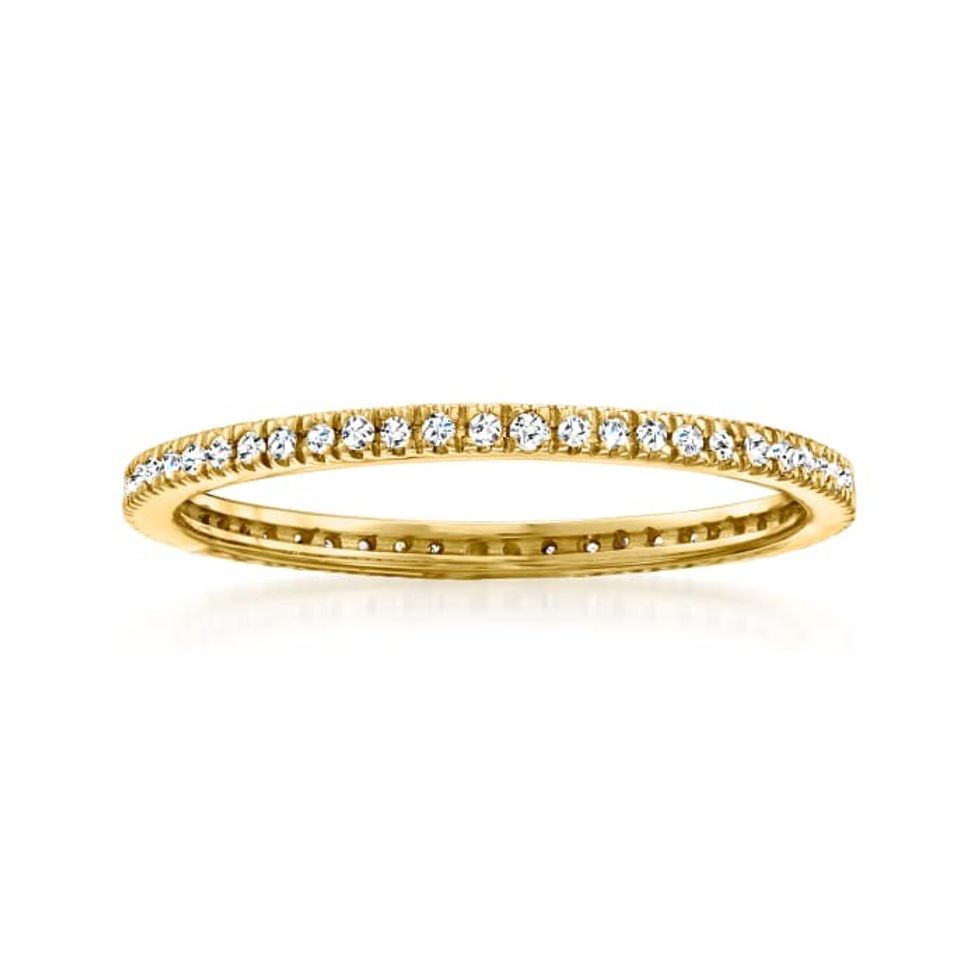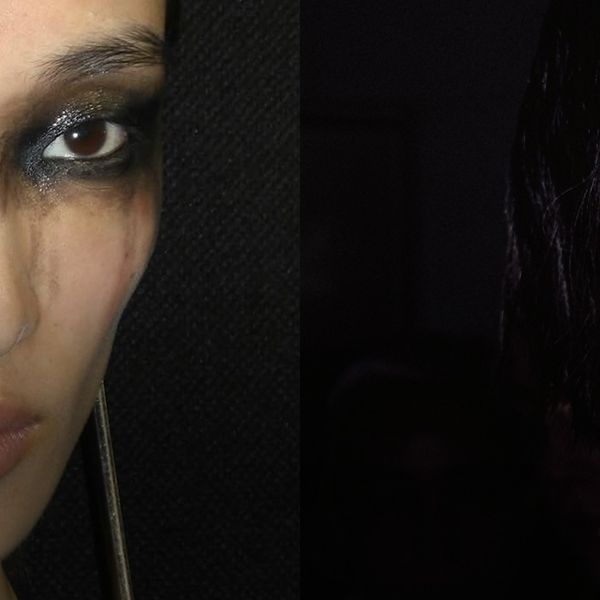Ones to Watch: Florist Ryan Norville Has A Green Thumb
And a killer sense of style. In Collaboration with RS Pure.

Before artisanal florists became a dime-a-dozen on Instagram, Ryan Norville paved the way for those looking to ditch their corporate job for something a little more creative. In 2018, she was let go from a career in web design and digital marketing (well, sort of—they didn’t renew her freelance contract). Slowly, and with a great deal of work, the New York native (and recent Paris transplant) turned a habit of arranging Trader Joe’s flowers in a dollar store vase into her own studio, Oat Cinnamon. Today, she handles floral design for clients like Glossier, Instagram, Nordstrom, Shopbop, Manolo Blahnik, Veuve Clicquot, and more.
While honing her creative process, Norville cultivated a strong sense of personal style that leaks into all facets of her life. Her rather sizable Instagram following comes to her not only for floral inspiration, but for her unique ensembles, as well. “It's expression that allows you to speak before you open your mouth,” the florist explains of getting dressed. Whether it’s stacked rings or a bouquet of blooms, Norville leaves her signature stamp on everything she touches. Below, she takes us through her career journey and deconstructs elements of her personal style.
How did you first become interested in flowers? What was it about them that drew you in?
“That's always a very interesting question because I don’t feel very unique in my love of flowers. It's funny, but also heartwarming because so many people tell me they love flowers. I’m like, ‘Everybody does.’ Maybe as a human being with our connection to nature, I think there's this innate biological love of nature and flowers. But I think in terms of a career, I was going to a lot of events where there was a “build your own bouquet” component or something and I would have so much fun with it. I saw that there was definitely a passion there, but I didn't know if I could pursue it full-time.”
What were you doing before you got into this?
“I was a web designer. I worked in fashion for a bit, but my formal education was in graphic design. Just out of school, I was assisting stylists and dressing models and things like that. But we had to pay our rent, so it was really difficult. At the time, it was the perfect storm of web design, UX design, and coding and blah blah blah—just a demand for people in those digital markets. So I started working with fashion and beauty companies on the corporate side doing their websites or emails, whatever kind of digital marketing they needed.”
Paint me a picture of the Oat Cinnamon trajectory. Did you start messing around on the side? When did you launch it in full force and how have you built it from the ground up?
“It was on the side, as a release from what I was doing daily. I don't enjoy being on my computer all day. I was mainly working for really large corporations. Initially, I thought that was the key to success or being happy. I found designing at larger companies meant a lot less responsibility. So, I needed an outlet, whether it was buying more plants or trying to do creative things around the house. I'd go to Trader Joe's and I'd be on different florist's Instagram's looking at different styles. I was also always freelance. At my last job, I was initially supposed to be there for two months covering my boss's sabbatical. When she got back, they asked me to stay on. Each month, they kept renewing my contract for almost two years. [And then] one day, they didn't renew my contract. They let me go. At that point, I knew there had to be a shift because I was truly unhappy [in that role.]
“I think our parents taught us that jobs aren't supposed to be fun or fulfilling. They are supposed to pay your bills. So after I left that job, I really stopped for a second. I couldn’t even apply to another job. That's when my husband suggested, ‘Why don't you look into this thing that you love, working with the flowers.’ But that was just a little hobby I had on the side, not a job. We had a friend who owned a flower shop and my husband [put in a good word]. That’s how I got started. I was doing a little bit of social stuff and shadowing designers. From there, I went to a full-time internship with a florist. [The next year], I started doing my own thing. I was putting stuff on Instagram. The clients I had previously worked for—beauty and fashion companies—threw a lot of events. Once they saw I was doing that, they invited me to [do florals for] their events. It was a very seamless transition once I finished training and started to put myself out there.”
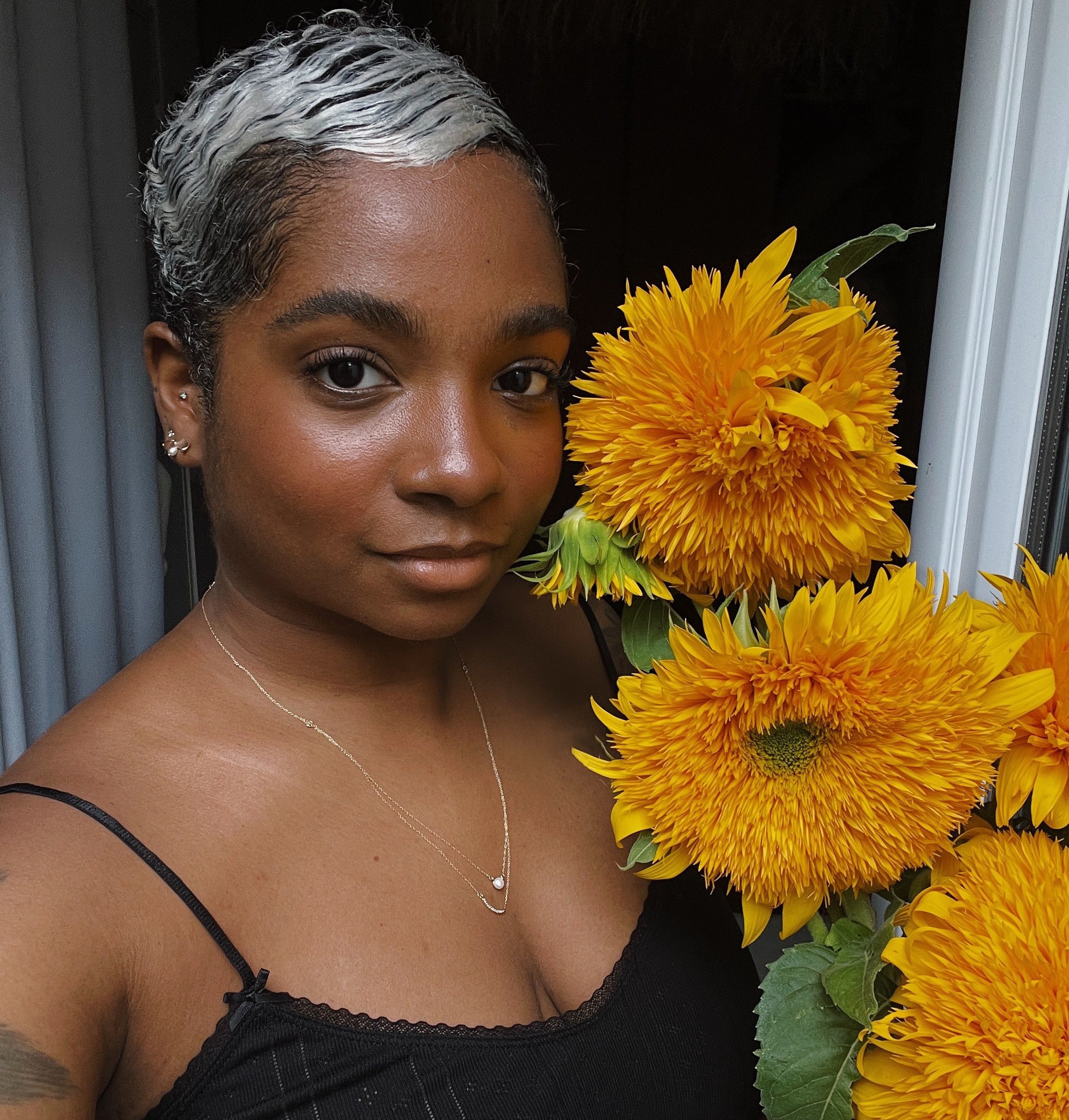
What goes through your head when you're arranging flowers? Is it all planned? Is it more free flowing? How important is attention to detail?
“I think there has to be a plan, especially when you start working for larger companies like Glossier that has such a specific brand identity. (Uniquely this company has a floral identity, too.) We spend a lot of time working with the clients [to determine] a floral aesthetic. Maybe they have some colors in mind that are going to shape the way I execute the design as well as how much they want to spend, etc. Overall I mainly focus on—it sounds very abstract—what I would like the end feeling or story to be, and what I want people to get out of it. There are so many different references with flowers. They are extremely cultural and historic and things like that. The same way you can pull different references with fashion to tell different stories, you can do it with flowers, as well. So I try to think of what I want someone to see, feel, think or be reminded of and direct my creative energy through that. Because of how pretty they are, especially on a large scale, you can go all over the place to the point that it's just a bunch of flowers and [it’s too chaotic to tell a story]. I think in the end, as with any great design, maybe someone can't pinpoint exactly what you're doing, but they can tell there is something very unique about what you're creating. My goal is to make it so seamless that you can't tell why you like them. You just do.”
How has the floral industry shifted since you've been in it? And what do you hope for it moving forward?
“It was kind of crazy coming onto the scene shortly before the pandemic. There's definitely been an increase in florists in a very short time which is super cool. When I began working in floral design, it was a very traditional industry. So much so that I wasn't sure that there was space for me in the beginning. With the rise of people being online and the visual nature of flowers, the industry's grown in new designers significantly in the past couple of years. These younger designers are very supportive of one another, and there's definitely a little community. In New York, we all shop the same flower market so we see each other every morning and that feels really good.
“I do see people coming in thinking this is something aesthetically pleasing to do, but not really getting that deeper meaning of it. Working with flowers is kind of unique in its design category because it is working with the Earth. I think you want to be very cognizant and intentional about how you're designing and building, because it’s more than just building momentum online. Obviously, you want to build a profitable business, but I think the way you're doing it, the materials you use, and the community you build are really important. Obviously, there will be ongoing conversations around climate change and sustainability. Sometimes I feel like there's two guards: people are either totally unaware of their materials or they are very intense about being eco-friendly. Sometimes there's a clash between those who don't care and those who are overbearing with knowledge, and it doesn’t not leave room for education or conversation. I hope that there can be a marriage between new people, who can learn from the seniors that are graciously sharing techniques and respect for the materials. The ultimate goal is to protect the earth and we all have to work together.”
What's the importance of having an identity in the realm of self-expression in a creative field?
“I think it's everything. It's expression that allows you to speak before you open your mouth. It is that extra layer of telling someone who you are and expressing how you like to take care of yourself, what kind of fabrics you wear, and all the different things. It tells a story that you can't tell by speaking. There’s of course the external or internal pressure of being perceived in a certain way with your style, but I think for someone who is creative, sometimes that pressure is about getting that story right. Is what's in my head coming through in the outfit or the accessories that I'm wearing?”
When you get dressed in the morning, what do you hope comes through?
“Most of the time, I just want to be comfortable. Sometimes it's like, ‘Man, I have this outfit in mind that I wanted to see come together.’ Maybe I want to impress someone or I’m challenging myself to bring something else to life. I think a challenge, at least personally, is having all these different personalities inside and never really knowing who's going to come out that day. Ultimately, my goal would be to express myself in a confident way. At the end of the day, it's unique and expressive, but also makes me feel and look good.”
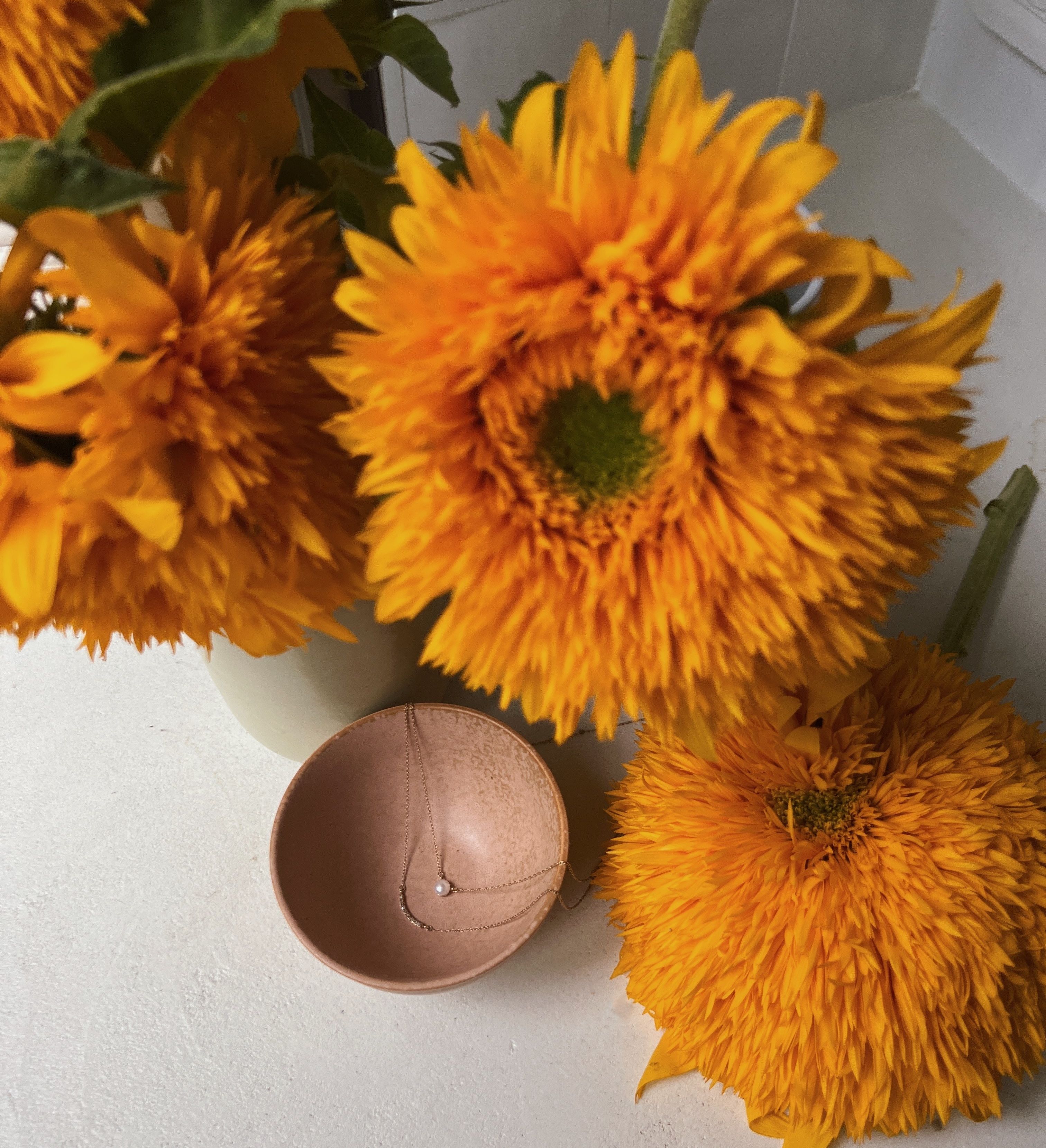
For jewelry, are you like an everyday rotation girl or do you like to switch it up?
“I am really into opals and pearls right now. I'm a Pisces. I wear a lot of little pieces on a daily basis, and I love stacking rings. I wear pretty much the same thing every day. There might be a little switch out, but it's pretty minimal. And then if I'm going to an event, I might want to be a little bit more expressive with some pieces, especially something like a necklace. The Diamond Crescent necklace from RS Pure is one of my favorites in particular. But with my short hair, I tend to keep my earrings minimal and switch out my studs for a hoop or a simple pearl like RS Pure’s Swirl earrings.”
What are a few favorite clothing or jewelry pieces in your collection?
“After each kid, I bought myself a really nice pair of shoes. Most recently I bought a pair of Miu Miu loafer kitten heels (before they got super popular). I got the brown and white ones, and I'm obsessed with them. They make me happy because it feels like a milestone gift. They feel quintessentially me, while sneakers-every-day-me is still me. They definitely—I know this is very easy to say about luxury items—feel like you can keep them for a long time. Similarly, my most important piece of jewelry is my engagement ring, which I know sounds very cliche, but it is. It was my husband's late mother's ring, and it's really beautiful to me. I've gotten more into jewelry in my mid-to-late twenties, and focusing on items that feel really special to me. Obviously, jewelry is something that you can accumulate little by little. So every time I add a piece, it feels very special. I think my everyday approach to jewelry is definitely having pieces that feel fun but classic at the same time—pieces that feel interesting enough to stand alone but also minimal enough that I feel comfortable wearing them every day. I think these earrings, RS Pure’s Diamond Ear Climbers, definitely do just that. I love that there is just enough sparkle without feeling overbearing, but they could also pair very well with either a few more earrings in a stack or be combined with a necklace or bracelet to create a full look.”

